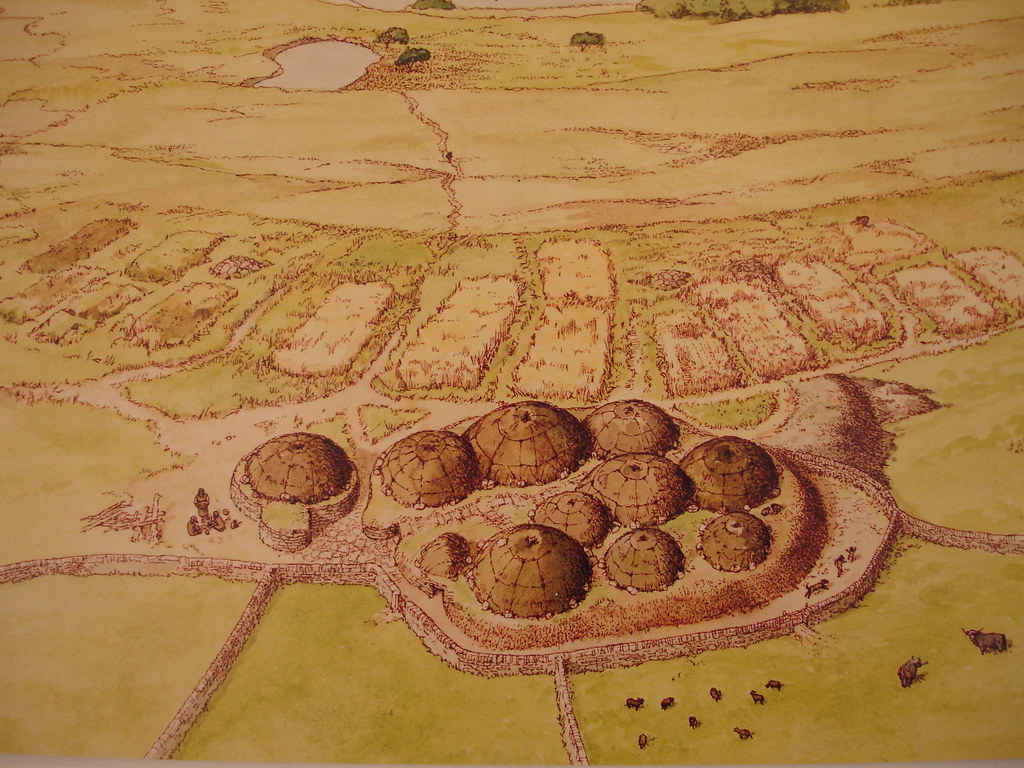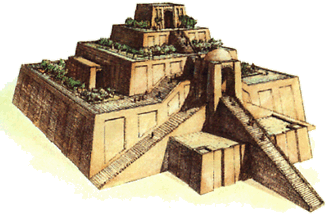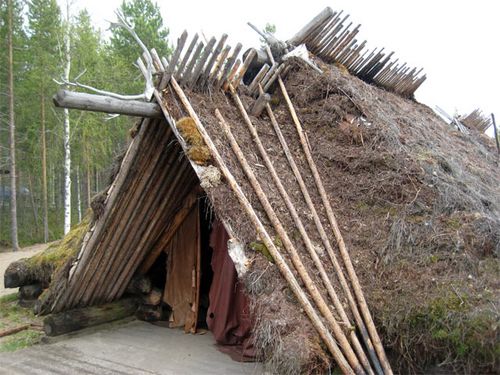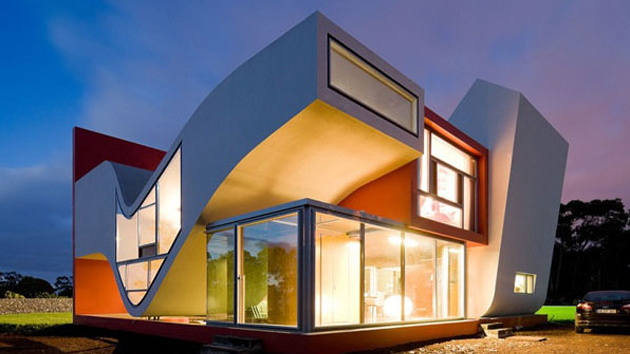Now the question needs to be asked, why did we desire better aesthetics while the rugged functionality of these stone age housing was still sufficient to live in? What changed? How did we move from this
to this?
1. Architecture as an arbiter of human civilization:
I think architecture has much to do with the development of civilization, of order and knowledge. The earliest house dwellers created houses in random patterns, so as to merely survive. These early families were often concentrated in small family groups which take part in a tribe, or a community. Like most modern communities, the architecture is often very similar and are based on the same architectural elements but in different combinations. However, these small family groups are more autonomous in the personal sense, sharing only in the communal food such as kills and plants. This is very reminiscent of the lifestyles of Native Americans, though there is a distinct lack of a leader in the earliest human settlements. Of course, with the cacophony of different people living together in the village, there bounds to be chaos.
 |
| Symbol of Civilization? Not Quite. |
2. The establishment of law and order
Law and human inhibition is what we claim to be some of the strongest advantages of humanity. Certainly, with these early humans, they still exhibit many primate behavior - notably violence and lack of a control factor which leads to disorder and necessary violence. Shortage of food can be one of the reasons why this happened. Of course, this violence leads to a lot of deaths, which could prompt a wary soul to issue a peace between two opposing parties, thus creating the concept of a de facto leader. This is different from the primitive concept of the alpha male. The alpha male is only concerned with having multiple wives and plenty of access to food and materialistic comfort, while at the expense of other males, does not actually dictate actions and behavior. Therefore, my argument is that differing forms of architecture rose because of the strong human nature to feel superior to others - a desire to have high levels of self esteem. Pride becomes a growing trait amongst humans during this period. For example, the modern Homo Sapiens Sapiens competed with Neanderthals for living space, and won, eliminating the last of the pure Neanderthals from the earth, but with some of their genes still persisting in our blood. So, the man who seized power by leading by example often tends to be pretty strong himself decides he wants to feel important. Assuming he has the family and food he needs, the logical extension of his power would be the dwelling. the house. This inspires innovation from these people, who decide to build him a bigger, better house. Now, of course just simply scaling existing houses isn't going to work because if these are made of stones and wood, they would need to find more stones or longer sticks. This is where these people decided to innovate and produce greater and great structures to honor the men in power. And thus, the main impetus for Architectural change began during this phase.
 |
| Buildings of different shapes |
 |
| Getting there more consistent |
 |
| More consistent buildings with standard roofs made of different materials. Rectangular buildings are a sign of progress |
Not only do tribe chieftains were able to have some of the best houses, but the rest of the people do get upgrades too; features such as sanitary systems are put into place because of the need to have a more pleasing environment. This is in direct correlation to the Chieftain's new building and status. If he has the best house and resources, but if his surroundings are filthy and unpleasant, he would not want to live their either. That wasn't the only justification that allowed the ordinary people to gain access to new buildings - these people themselves wanted to incorporate these new styles into the general village. This would soon evolve into the first towns, where buildings are built along a logical grid or layout and then standardized to allow better city planning as people begin to develop complex linguistics and a writing system. This was because there was no concrete form of despotism in early human society - the chieftain has power, but not absolute power, therefore allowing his people to have some leverage in the communities affairs.
Because humans are the fastest growing primates, human tribes eventually come into contact with one another. Not knowing any better, these humans with strong primate instincts would clash with each other - formalizing human warfare because two alpha males can't agree on who's more dominant. So with violence, the most successful alpha males come to establish a kingdom of tribes, united by one man. With the absence of a code of laws, to be able to rule over tribes of people, these kings would employ groups of men as armies, thus stabilizing the population. Of course, with the rise in status and importance these men create grander architecture and then passed down some of these elements to the masses as tribute to his kingdom. Therefore, we have the first Palaces. With the help of his allies was this king able to conquer the territory. To reward his allies, the establishment of a wealthy gentry class create the demand for medium sized extravagant houses. Thus the same styles afforded by the Chieftain, the King expanded into the ranks of the powerful "nobles". The growth of cities accelerated with the presence of a King, which in turn created job classes which was performed by commoners to help run the city. Again, these created new structural styles, because their functions are different. Still, the architecture of this still favored function over artistic design.
 |
| This is a little bit advanced but there are a lot of rectangles. Some design elements are represented in this artistic render |
Religion was very critical in expanding the scope of primitive human creativity. Stonehenge inspired these humans to arrange huge stones to celebrate the stars and the sun. This expanded the scope of stone and didn't restrict it t to just use for human dwellings. Ancient Pagan religions all associate itself with elements of the Earth - all of them cite some deity of the Sun. This is partially responsible for inspiring these people to create taller buildings, thus introducing the concept of height as a feature of architecture. Even future monotheistic religions employ tall structures in their veneration of their gods. Fur these early religions, height and the placement of objects to mirror solar, lunar and star positions become the guidelines for architecture. These gradually evolve to inspire people to worship them, creating an art form from geometric shapes.
 |
| the ascending towards the sky is emphasized by the stairs |
Basically, through the first two sections, I theorize where the origins of each element of a building originated from, namely the roof, walls, size, and height as well as consistency and purpose all originated from this era. Still very much an era of function, but the progress of art changes the development paradigm as we get closer to a higher fusion of art and design in architecture.

















